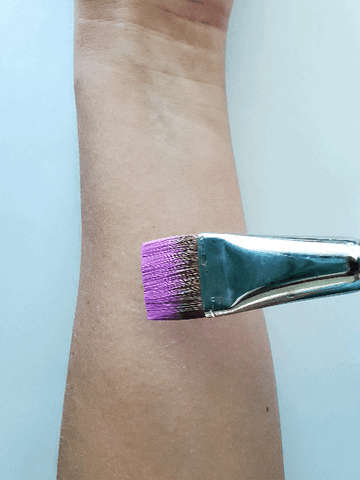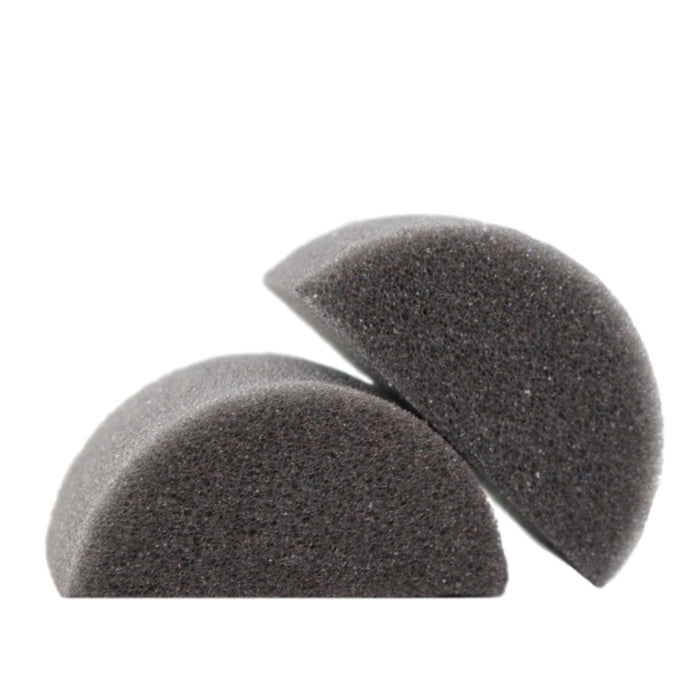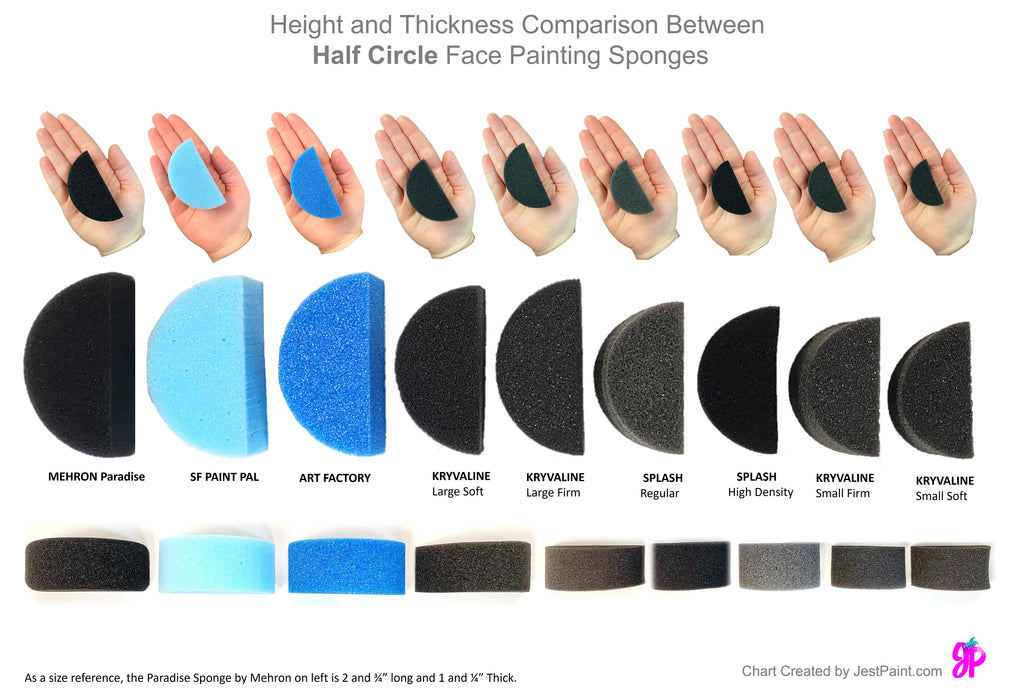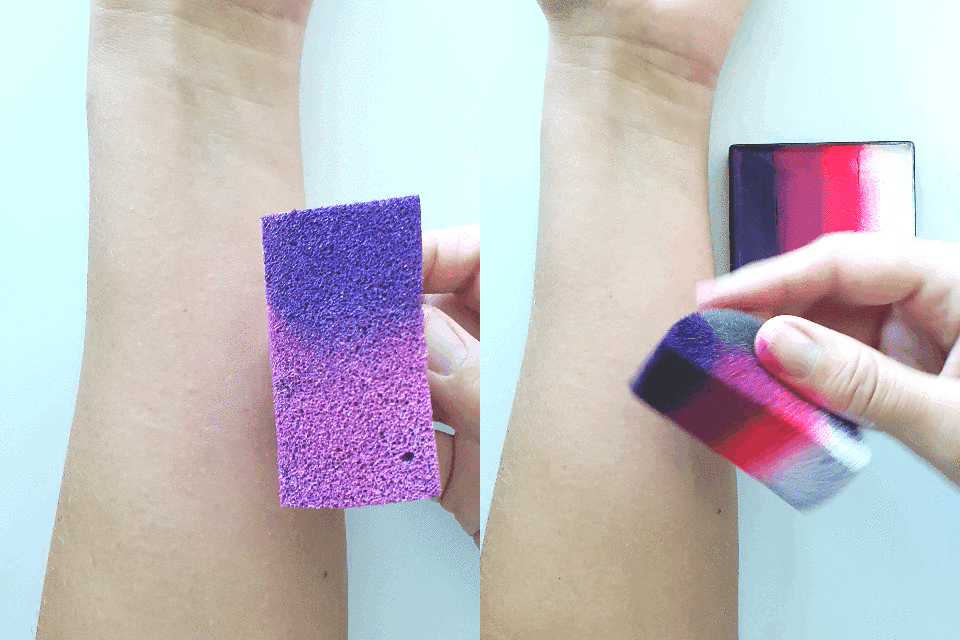
Body Paint Guide | Everything You Need To Know About Body Painting
Summary: Body painting is the art of painting on the human body using cosmetic-grade paints. To start, you will need skin-safe paints (not acrylic), high-density sponges, and synthetic brushes. Always remove with soap and water.
In this post, you will:
- Learn the basics of body painting, from tools to techniques.
- Explore different body art styles and their applications.
- Discover safety tips for creating stunning and safe body designs.
- Get expert advice for beginners and advanced artists alike.
Body painting is one of the most ancient forms of art. It has been around for thousands of years and has been a critical part of human culture.
The art of painting our bodies has been used to celebrate, go to war, hunt, seduce, and more. Body painting is an incredibly versatile art form that ranges from using decorative body paints to create designs on our bodies to more modern body art forms like tattoos.

We will use this blog post to talk about the different forms of body paint and answer some common questions regarding this art form.
How did Body Painting Start?
Body painting can be dated back to the paleolithic when indigenous tribes use natural pigments made from ashes, rocks, animal by-products, and plants to decorate their bodies for diverse purposes.
Body painting was used on ceremonies with specific patterns and colors for each occasion, as well as on warriors, to help incite fear in their enemies and identify themselves. Body painting has also been used as camo when hunting, to aid hunters in better hiding themselves, just as it is done today.
Later on, body painting was also used to enhance one's beauty, adding more makeup-style decorations to the body. It has also been linked to religious ceremonies and other forms of celebrations in which the paint was used as a way to connect the human body with the gods or deities.

How to Body Paint?
Body Painting is a multiple-step process that requires time and the use of the right supplies. Keep in mind that you are applying products to the skin for a prolonged period of time, so it is important to do things the right way, take your time, and take care of your model´s skin and overall health while you paint.
Plan Your Painting
Before you start body painting you need to have a sketch of your design unless you are going for a more free-spirit look. Having a sketch will allow you to see if each part of the design works on the area of the body you will paint it, and will serve as a guide once you are painting as well.

How To Prepare The Skin and your Model Before Body Painting
In order for body paints to stick to the skin, you need to make sure the skin is clean and oil-free. Please follow these steps to get the model´s skin ready for a body painting.
Clean the Skin
The first step is to clean the skin. Ask the model to take a shower and use a gentle soap to clean their skin. You don't want them to exfoliate or do any other abrasive style treatments before getting painted. Just a quick shower to remove dirt and oils from the skin.
Once clean, just towel dry and do not apply any lotion, oil, bug spray, sunblock, etc, since those products can interfere with how the paint sticks to the skin.
Apply a Barrier Spray
If you want the paint to last even longer you can apply a barrier spray to the skin before painting, this will help prevent the body from sweating or creating oils that can smudge your design.

Create a Comfortable Set Up For Your Model
Your model is as important as the art you are creating and since this is a multi-hour project, it is important to make sure your model is comfortable. If the model will be standing, make sure to provide them with a comfortable soft, and cushioned surface to stand on. Also, if it is not warm enough to be almost naked, provide them with a heat source so they can stay warm. Remember that you are applying wet paint on an almost fully naked body, it can get cold fast. You won't notice it because you will actually get hot while painting, but your model will likely be cold.
Remind the model to hydrate often, to move their legs as needed to facilitate circulation, and tell them to avoid locking their knees as they can quickly pass out if they do that for several minutes.
Allow time for your model to eat something if needed, drink water or other liquids with a straw, and take breaks to move their body. We suggest leaving the underwear area painting to the end since your model might need to go to the bathroom a few times during the painting.
How To Apply Body Paint
Body paints come in different formats and depending on the format the way you will apply them.
How to Apply Water Activated Solid Body Paints
These are by far the most popular body paints. They come in a cake form, they can be hard and dry or have a clay-like consistency, and they are applied with a sponge or brush using water.

Simply get your sponge or brush slightly wet, you want them moist, not dripping water, and then rub the applicator back and forward over the body paint cake until it is fully loaded with a creamy-like consistency. Then, apply to the skin as you wish.

With sponges, you should tap gently over and over until you get good coverage. You can also do a stipple effect, or a dry blending effect (using an almost dry sponge) to create different textures.
If you are using a brush we suggest using a kabuki brush and applying the paint in circular motions for better coverage. You can also use a body brush, they are usually 1 1/4'' wide.

For detail work, you will want to pick a set of good face and body painting brushes that includes flat brushes, round brushes, filbert brushes, etc. Each brush will give you a different stroke so get a few ones and play around!

How to Apply Liquid Body Paints (water or alcohol-based)
These kinds of body paints can be applied either with a sponge or brush following the techniques mentioned above only without adding water, or with an airbrush if they are thin enough (or if they are not, you can thin them out first).
An airbrush consists of an air compressor, a hose, and an airbrush gun. You will put some paint in a small container designed to hold the paint on your airbrush gun and then point the airbrush gun towards the body at the desired distance (depending on the effect you want) and then use the trigger to let the paint flow.
You can watch videos online to learn how to use an airbrush compressor, it does require some getting used to and might take a bit longer to learn than the sponge and brush technique, but it can also really speed up the body painting process and give you a smoother finish.
Body Painting Tools
Body Painting Brushes
Body painting requires the use of high-quality specialty brushes. If you don't have a good set of synthetic brushes yet, I suggest you browse our vast selection of body painting brushes and select at least the following ones:
- A one-inch flat brush
- A 3/4 inch flat brush
- A filbert brush (medium size)
- Round brushes numbers 0,2,3 and 5
- A 3/4 inch angle brush
- A small angle brush
- A kabuki style brush
Face and Body art brushes are made with synthetic bristles which work much better than natural hair brushes for this medium. They are firm, and bouncy and allow you to create very intricate designs.

High-Density Sponges
High-density sponges are a crucial element of almost all body paintings. They allow you to cover very large areas of the body quickly and effortlessly.
These kinds of body painting sponges come in different shapes, sizes, colors, and densities. Focus mostly on the shape. For body painting, you should look for full or half circle sponges since they will give you the largest painting surface.
Do not try to use regular makeup sponges as those don't work well with water-activated face paints. Body painting sponges are made from reticulated polyether foam, a special foam that works perfectly with regular body paints.

Airbrushing
If you are planning to airbrush, then you need to look for an airbrush compressor and guns created for body painting. Regular compressors can be too strong for skin application. You need to be able to regulate pressure with your compressor so as not to damage the skin.
There are hundreds of different compressors, guns, hoses, and different accessories to make your airbrush experience a better one. Usually face paint stores do not have a big selection of airbrush equipment and you will have a better chance of getting the right product for your needs if you go to a specialized store like EBA Performance Makeup Airbrush Store.

Setting Spray After The Body Paint Has Been Applied
As an optional extra step, you can apply a makeup sealer to your body paint to make it last longer and increase its resistance to smudges, sweat, and even some water. Keep in mind that this will not make it waterproof or smudge/sweatproof, just more resistant. For a waterproof/smudge-proof/sweatproof design, you need to use alcohol-activated body paints.
How To Remove Body Paint
Removing body paint from your body is usually an easy task so long you follow the instructions below. Keep in mind that the longer you wear the design, the easier will be to remove afterward. Staining surfaces can happen when removing body paint, be ready to have to scrub some paint off from a fiberglass shower or tubs, and drapes. Paint usually doesn't stick to glass or tile.
Water or Alcohol Based Body Paint Removal
These kinds of body paints can be removed with a face and body art soap, a sponge or rag, warm water, and patience. Simply add soap to your sponge or rag, gently scrub all of the painted areas, then, once all of the pigment has been loosened, proceed to rinse with warm water. Repeat as necessary.
If some faint stains are left, then add some lotion to the body, let it rest for 30 minutes, and repeat the previous process.
Oil-Based Body Paint Removal
Removing oil-based body paints requires a different process. Oil paints need to be removed with special removers or with oil-based products. You can use baby oil or lotion to loosen the pigment, and then use soap and water to wash it all off. Keep in mind though that is not very common to use oil-based paints for body paintings, this kind of paint is more common in the clown world.
Becoming Better At Body Painting
Many people ask us how can they become better at body painting, and the answer is simple: take classes and practice! Both things are very important. Luckily there are many amazing body painting instructors out there teaching classes in person and online.

As far as practice goes, this is key! You need to find willing models or practice on yourself, but the only way to get used to the body shapes and proportions, the medium, your tools, etc is to practice as much as possible.
What do Body Painters do?
But, what exactly do body painters do? Well, they use face and body paints, usually water-activated ones, to paint a person's body in a decorative way, effectively creating a living art piece. Body Painting can be done for several reasons:
- To create art
- As a promotional or marketing piece at an event
- For fun
- To enhance a costume for an event, parade, convention
- To compete in international or local festivals
Keep in mind that body painting can also include temporary tattoos, glitter tattoos, henna, and more. There are many different forms of body art, but we usually refer to body painting when we talk about using actual face and body paints to draw and paint over a human body.

Is Body Painting Dangerous?
Body Painting is usually safe if performed with the right products and following the instructions we listed above. One big thing to avoid is using products not meant for the skin like acrylics, tempera, spray paint, etc. These products are not meant for the skin and will likely cause skin irritation, an allergic reaction, or worse, a chemical burn. Always use safe face and body paints from a reputable source and a trusted brand.
If the person being painted has sensitive skin or has had allergic reactions to anything in the past, do a 30 minute swatch test on their inner elbow to see if they will react to any of the ingredients in the paint. Do not paint over acne, open wounds or rashes. Make sure to keep paint away from the water line and do not face paint someone near the eyes is they are wearing contacts. Have them remove their contacts first.
Make sure that your model is drinking water, using the bathroom as needed and is not too hot or two cold. Give them time to move around every 20 minutes to avoid muscle cramping.

What does Body Paint symbolize?
Body Painting means different things to different cultures. We also need to separate body paintings and body art done in the context of a ceremony or regular life event of indigenous people, and modern body art is done by modern societies.
For indigenous people body art is an art form used for special occasions like celebrations, funerals, weddings, right of passage ceremonies, or even for hunting. Each pattern and color has its own meaning and reason to be.
Modern-day body art is more about the art itself or expressing an idea or emotion through the art. We also use body art at celebrations but it is usually not connected to a spiritual meaning but rather as decorations to enhance beauty.

How Long does Body Paint Last?
Body Paint can last anywhere from a few hours to a day or two depending on the products used. Henna can even last longer, reaching up to two weeks if well protected and cared for.
Alcohol-based body paints can last 2 or 3 days, while water-activated paints will not survive overnight as sweat and rubbing against the sheets will remove most of the pigment.
Glitter tattoos can last up to a week if you care for them well.
What Paint is Best for Body Paint?
There is no one best body paint for body painting. It all depends on the results you are looking for and the goal of your painting. For long-lasting results choose alcohol-based paints. For easy to remove and overall ease in application choose water-activated body paints. The best paint for body paint is ALWAYS cosmetic grade, never use products not intended for the skin.

Where to Buy Body Paint?
Buying body paints nowadays is super easy, simply google "buy body paints" and you will find hundreds of stores. Yet, there are a few things you should keep in mind:
- Always buy from reputable stores, like ours. Don't go for stores that only pop up around Halloween.
- Always buy reputable well known brands, choose brands that have been in the market for a while as those are more likely to be safe than ones that just pop up for Halloween and they disappear after that.
- It is better to buy from stores that have specialized customer service, meaning that they have body painters on staff to give you tips, ideas, and suggestions. Box stores like Amazon and Walmart do not have specialized staff so they won't be able to advise you and guide you while shopping.
- You can always buy from our store at www.JestPaint.com, we only carry well-known brands specifically designed for professional face and body painters, and the store is owned and operated by artists that have done face and body painting for years.

Can you Put Acrylic Paint On Your Body?
A lot of people browse the internet trying to find out if they can put acrylic paints on your body; the quick answer is no. Acrylics are not designed to be used on the skin, the pigments on acrylic paints are not cosmetic grade, meaning they can have impurities like heavy metals that can poison the skin, create chemical burns, etc. Always use cosmetic-grade products.

What do Cosplayers Use for Body paint?
A lot of cosplayers use to use PAX paint which was a mix of ProsAid body adhesive and liquid latex. Now PAX Paint is a water-based skin-safe makeup product. This product though tends to be used mostly to cover tattoos and to paint prosthetics. If you are looking to paint the skin we suggest using either regular water-based face and body paints or airbrush body paints. You can find a huge selection of great face and body painting brands at our store.

Which Paint is Safe for Skin?
Only face and body paints specifically designed to be used on the skin are considered safe for skin application. These are all cosmetic-grade products and are not usually found in arts and craft stores. Check for brands like Fusion Body Art, Superstar, Diamond FX, and more online or at our online store.
Body Painting Trends for 2023
This year has just started but we can already anticipate some body art trends based on some upcoming movies and events.
If we look at the movies that will be released during 2023 we can expect body paintings based on superheroes to continue to be very popular, specially ones inspired by Spiderman, Flash, Guardians of the Galaxy and Aquaman.
2025 UPDATE
Since movies influence body painting requests for Halloween, check out Avatar, Five Nights at Freddy's and Superman for Halloween 2025!
As we continue to see more and more awareness about climate change, expect to see that reflected on all forms of art including body painting. You will also notice references to magic mushrooms and marijuana being hits this year.

Superstar Face Paint - Body Paint Art work by Matteo Arfonotti

Anna Wilinski painting Earth Girl for The Body of Art Calendar in 2009
We have every shade to choose from at Jest Paint for your Body Painting Needs!
We also have some big sports events coming up, including the FIFA Women's World Cup in Australia and New Zealand and the Rugby World Cup in France, both of which are certain to inspire some face and body painting.





















Comments
Leave a comment